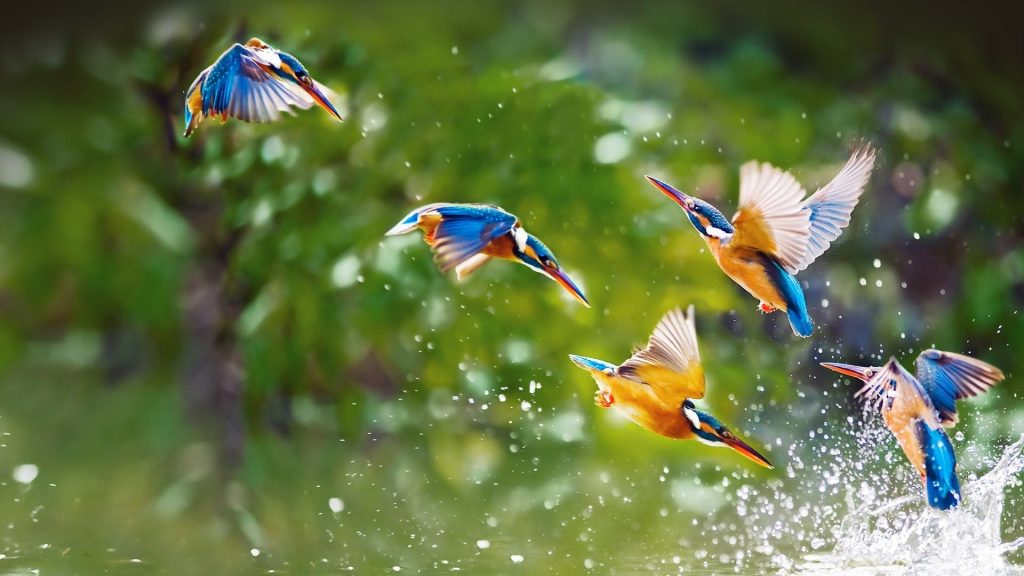The most recent report from the United Nations’ Intergovernmental Panel on Climate Change (IPCC) sounded the alarm for urgent climate action. According to the report, the difference between 1.5°C and 2°C of global warming matters much more for our world than we realized – more extreme weather, hunger, poverty, and displacement, among other serious impacts.
But what does a warmer planet mean for ecosystems and biodiversity?
In an editorial for Scientific Advances, two leading researchers – UN Foundation Senior Fellow Dr. Thomas Lovejoy and Dr. Lee Hannah – discuss the important connections between climate change and the natural world. While climate change threatens to unravel natural systems, ecosystem restoration presents a major – and underexplored – climate solution.
Here are 3 key findings you should know from their article:
1. We need to limit global temperature rise to 1.5°C.
Limiting temperature change to 1.5°C gives the world’s ecosystems a better chance of survival.
Small changes in global temperature rise – even a half degree – can have devastating effects on ecosystems. Although we think of ecosystems as a collective system of interacting organisms and their environment, they do not respond to changes collectively.
The individual species that make up an ecosystem react individually to changes in climate – some more extreme than others. For example, slightly warmer temperatures in western North America tipped a delicate ecosystem balance that caused harmful, native bark beetle populations to explode.
Consequently, differing responses can disrupt the delicate balance that form ecosystems – and once they disaggregate, they may not recover. For this reason, many researchers are concluding that ecological systems around the planet will not be able to tolerate temperature rise much beyond 1.5°C.
2. Ecosystem restoration will be an important solution to climate change.
Ecosystems are built out of carbon and have the power to store carbon – providing a natural climate solution.
While ecosystems are certainly threatened by climate change, at the same time, they can offer one of our best defenses. Our planet works as a linked biological and physical system (an ecosystem), which is built from the essential element of life: carbon. When ecosystems are destroyed, they release the carbon they are built from into the atmosphere, which contributes to global warming. According to new estimates, the amount of carbon released from ecosystem destruction is much larger than previously thought.
However, there is also good news. By restoring ecosystems that have been damaged or destroyed, we can sequester and store carbon from the atmosphere. Focused and purposeful ecosystem restoration will be important to limiting global temperature rise to 1.5°C. That’s why a new coalition of organizations, including the UN Foundation, Environmental Defense Fund, Conservation International, and others, are urging world leaders to harness natural climate solutions, such as reforestation and wetlands protection.
3. We must act on a range of solutions, urgently.
To limit climate change to 1.5°C warming, we must significantly reduce our current emissions before 2030.
We need to act quickly on restoring ecosystems; at the same time, we need to also address the other factors contributing to our changing climate.
We must transition to cleaner energy sources – and use less energy. And as we continue to adapt to a changing climate, we must continue to balance our needs with conservation. The 17 Sustainable Development Goals (SDGs), which integrate social, environmental, and economic needs, chart a balanced path forward for achieving prosperity for both people and planet.
These are a few key findings we must remember as global leaders come together to make major decisions about ecological protection and climate action at the 14th Convention on Biological Diversity this November and COP24 in December.
And more research is on the way. This January, Dr. Lovejoy and Dr. Hannah will release a new book that will provide an up-to-date analysis of the critical interactions among biological diversity and our changing climate.

